by Mitch Jacobson and photos by Mark Forman
The buzz was apparent the moment I landed in Las Vegas. People just seemed excited. I was not disappointed either as NAB 2010 turned out to be the best show in recent years.
Year after year, the sea of technological change waves back and forth across our industry as we editors surf it the best we can. Keeping up with technology seems to take up more and more time––integration between edit tools allows for a bigger bag of tricks, convergence gets deeper into mobile and live streaming (which will inevitably climb to become the top tier of our deliverable masters and formats), and post workflows become more refined.
Every year the gear gets better, faster and more affordable and we adapt to keep up. Storytelling hasn’t changed much but the way we tell those stories has. Of course 3-D is big this year as many features and networks are going three-dimensional, but to me, it is super hyped-up mostly by TV manufacturers to sell more TVs. In my opinion, 3-D will never be as hot as HD was or what mobile is, for instance, but now is the time to get into editing it so on goes the world.
Other hot topics discussed at NAB include the blurred line between on-set editing and assistant camera/DIT jurisdiction and the FCC’s new improved stance on the internet––totally wigging-out old-school broadcasters as the future of broadcasting is finally completely clear to them. “Broad” is in a slow fade out and “Web” is crashing in. Kids are simply cutting the cable and perfectly are happy with watching video on their phones. Or should I say mobile unit. I mean really, who makes phone calls anymore? That’s why NAB’s Mobile Pavilion was always full of lookie-loos. Mobile is the future delivery platform––independent films as iPad Apps, anyone?
Editing Software
As for editing software, the three A’s have all come to the party. But this year, but only Adobe and Avid brought the party favors. Each has taken its platform to a new level, helping to move us all forward. Final Cut Pro was seen in many booths but, as expected, there were no major announcements from Apple. Instead, the company’s approach is to point out that its technology partners (numbering over 300) continue to support the platform. Adobe and Avid, on the other hand, have rocked my world at NAB and have restored and surpassed any ground they may have lost in the recent years. I only hope Apple has been working to get rid of Carbon code and up FCP to the new Coca and 64-bit code Mercury for the past five years because, they need to do some serious catching up and fast. It even got hot in the press when Adobe employee Lee Brimelow was quoted in his blog saying, “Go screw yourself, Apple,” over the lack of Flash capabilities for the iPhone.
Avid
Meanwhile, Avid came out of the gate swinging hard this year with the release of Avid Media Composer 5.0, which is its most calculated update in recent years. It really flips the company’s original “my big fat proprietary media tool is better than your user-driven desktop hierarchy for media management” style 180º on it ear. Now with the improved AMA (Avid Media Architecture), you can manage any drive any way you want––but it gets better! You can work with Apple ProRes and any QuickTime format natively, and MC5 can play it as a source. Also, native QuickTime/H.264 workflows for Canon 5D and 7D cameras. But, best of all, say goodbye to trans-coding, re-wrapping or logging and transferring files before you can edit.
This is getting down to the business of the creative cut. You literally skip the ingest phase and go right to the edit mode of your choice. Plus, it also makes workflows across platforms so much easier. For instance, now we can cut our off-line project in Final Cut, Avid or whatever, and online on any other platform with the original media. You say you love to edit with Avid, but your show is going to be onlined in Final Cut for color correction in Apple Color? No problem, just work in ProRes and consolidate. Use Automatic Duck to move your project and––like that––you’re sending to Color. You can even round-trip your Color project back to Avid with graded files linked for Avid project deliverables.
It doesn’t stop there: There’s native support to RED .r3-D media, scaled to HD size without Metafuze processing; use a internal RED Rocket card instead. Drag and Drop editing directly in the timeline. Forget about segment modes, just move it. It works with audio and trimming marks. Better late then never.
For processing improvements, Avid now uses internal processing for full 4:4:4 colorspace from correction and keying to effects. In Nitris DS, you get HD-RGB with dual connectors for the high-bandwidth resolutions. You can now use third-party Matrox MX02 Mini to monitor for a high-quality monitoring choice. Another interesting feature that still needs to shake out a little is the “cloud-based” solution working with proxies and screen sharing over the web.
As you can tell, I’m really psyched about Avid. It has leapfrogged over to the future and set the bar. This will surely cause a few hot-foots in Camp Apple, and rightfully so. Avid went from being the least native supporting platform to becoming one of the best.
Adobe
Oh, Adobe. They just get it. But, what can I say about Premiere Pro for feature films or TV shows? I could say that as one who loves Adobe but doesn’t cut with Premiere Pro, I am very impressed. It has always seemed like a Swiss Army knife in the edit room, but now even more than ever with native Cocoa 64-bit and complete round-tripping to Final Cut and, of course, the inter-operability with all the Adobe products. Dynamic link with After Effects. Oh yeah, the largest size canvas is 10K by 8K. Yes, that’s 10K.
There is no rendering. And it is so fast. Did I say no rendering? It does render in the background with memory sharing amongst all applications. The more RAM, the more real-time previews. You can run everything at the same time and not run out of RAM. It uses fractal playback and a mercury engine…CUDA.
What is CUDA? It’s NVIDIA’s parallel computing architecture that enables dramatic increases in computing performance by harnessing the power of the GPU (graphics processing unit. It’s fast and it works. It’s the only one of the “A” Teams that allows full 4K RED moves in 2K. So why not switch to Premiere for editing? Good question, but before I had time to think about it, Adobe stepped into the After Effects and Photoshop zone.
I was blown away with the new rotoscoping tools: RotoBrush. I saw a very scrappy roto job done in a few seconds, rough and tumble. RotoBrush found the edges of the mask and made it sweet before I could eat a chocolate. Then, with the click of the spacebar, the animated roto mask was made…not just made but, made well. This was really easy; even an editor could do it! It was a beautiful mask made in seconds and animated very simply.
How about we take a deep breath and become Content Aware? This graphic trick is so cool. How many time did you want to use a background of a photo but there was something in the frame that you wanted to remove? With Content Aware in Photoshop, you outline the trouble zone and Photoshop cuts it and calculates the new background from the old one. Basically, it creates a background out of nothing.
The Lightroom has a RED workflow. There is a stereo plugin for 3-D. The speech-to-text mode introduced last year has been improved; it’s more accurate with the ability to compare and analyze your speech-to-text file with the actual transcript file. It matches them. Unlike ScriptSync, it doesn’t allow script-based editing, but it does allow you to find a scripted line. Plus, it has a metadata search mode. The original metadata that you use in your script can follow through your shoot, post and deliverables––it’s even trackable on the web clips on line.
Apple
Although Apple did not formally announce anything or have a booth presence this year, there is something solid to be said for the company licensing its ProRes codec to Arri for the new Alexa digital camera; its raw-to-ProRes workflow will work on a laptop. Porting Autodesk Smoke for $15,000 and da vinci Resolve ($1,000-50,000) to the Mac while licensing ProRes to Clipster is a nice step towards better compositing and finishing tools on the desktop.
There was a handful of other announcements from various vendors and developers: Redrock micro remote control focus with sonar tracks motion across screen. Canon debuted log and transfer for XF 300 and 305 cameras; Codex digital has field recorder for Matrox; EditShare aquired Geeves.
From Platforms to Plug-Ins
For a turnkey post system from ingest and media management to editing and project file sharing, you got to check out the new EditShare system. It works with a proprietary system that catalogs all the media onto a SAN and has intense media management database. Everything is built on top of that for an integrated system. It is now approved by Avid and you can share files or sequences like Avid’s own Unity. EditShare also owns Lightworks now. They released it as open source to allow the development community to try to take it to the next level.
Various other software manufacturers have come out with improved versions or apps. Automatic Duck announced improvements to Pro Import AE with CS5 compatibility and Media Copy with a solution that enables users to read Avid bins and project files, and easily manage them from within Media Copy.
Singular Systems upped the ante on PluralEyes, its “Automagic” sync ap for multi-camera and double-system sound, but this year there were two really cool things to check out: GET and CatDV.
GET from AV3 Software is like ScriptSync on the Avid. It is not so fully a script-based editor as it is a search-and-find tool to match to audio on your clips. The process is similar to set it up. GET analyzes the audio stream using a phonetic search tool and it works like a stand-alone app in FCP. It’s really fast and the only thing out there like it, but without the speech-to-text function, is CS 4 and 5.
CatDV from Square Box Systems is kind of like what Final Cut Server should have been. It’s one of the most useful products this year. CatDV can run on any computer, or on a network, and allows you to organize your disk drive arrays (asset management) very easily. It instantly (within seconds) creates low-resolution proxy files of all of your media, and then allows you to catalog this information, search it and then drag it back into your editing program, where it instantly opens up all of your associated files that you have selected, in full resolution.
“Since day 1 of the Avid Media Composer, people have said, ‘What the heck is on these disk drives?” said Bob Zelin, system integrator and Creative Cow leader. “This has become much worse in the days of common 16- and 32-terabyte drive arrays and shared storage. CatDV is a life-saver, allowing modern facilities to organize the mess on their drives. At $350 for a single seat of software, it is an unbeatable price.”
Education and Training
There were the usual exhibits and pavilions at NAB this year, plus the Post Pit, where you get digested versions of hot topics demonstrated by top film/TV pros. For extensive training, nothing beats the incomparable World Post Production Conference brought to us by Future Media Concepts. It’s 5-days of cutting-edge training for TV, video, film, and new media professionals; seasoned industry experts conduct over 250 innovative and hands-on production and post-production sessions.
Keynote-worthy Members
This year at the World Post Production Conference, there were two Editors Guild members making keynote addresses. One from Maryann Brandon, A.C.E., and the other from yours truly, Mitch Jacobson. Plus, Guild member Dan Lebental, A.C.E., gave a workshop about his techniques cutting the Iron Man movies at the Avid presentation stage.
Brandon started with her history cutting on just about everything from the Steinbeck, Ediflex and Lightworks to Avid editing for director J.J. Abrams on Alias, Lost, Star Trek and Mission Impossible 3. She said she likes collaborating, and traded drama scenes for action scenes on Star Trek with co-editor Mary Jo Markey.
Brandon also talked about cutting previz and Abrams’ now-famous flares and camera shakes, saying that they drove her mad at first, but that she soon came to love the flares, using them to help trim cuts. She also revealed her trick of adding one red, white and yellow frame to trasition between speed and falling shots. In her keynote, she discussed her 3-D masterpiece, How to Train Your Dragon, as well as editing animation vs. live action. In conclusion, she advises editors to stay positive and remain less cynical if possible––because it is up to the editor many times to keep the director and the post crew relaxed and focused on story and characters instead of the drama behind the camera.
My keynote focused on on-set editing and being prepared for anything…starting with designing an on-location/portable editing suite and dealing with quick turnaround multi-camera jobs. I also held a technical demonstration on “growing media,” which is essentially an empty QuickTime shell that gets filled with encoded frames during a live show. This allows you to begin editing before you finish recording the material.
I showed four channels of Telestream’s Pipeline HD system ingested, encoded and edited on-the-fly directly into Final Cut. I grouped three cameras plus a line cut into a multi-clip and began editing while the same files were “growing” or continuing to record the live show. Then, I used Tools On Air’s LiveCut to recreate my line cut directly into the QuickTime movie by importing an XML file that was an EDL from the live switcher. LiveCut created over 800 “add edits” in less than 15 seconds.
3-D
The phenomenon of 3-D was big this year, and we as editors are dealing with it. Mostly it’s still about telling stories, but now we are telling stories within multiple planes. On the set, there are many more jobs and many focus-pulling assistant cameramen are getting into the act and becoming sterographers to converge lenses. It turns out that this is a skill that is easier translated for craftsman that can judge distance and focus.
Mainly for cutting, It’s time to slow things down. No more fancy, fast-paced cutting. We need more time to adjust for the 3-D depth of field trickery. “Let it Breathe” should be the new mantra for 3-D editing. One process involves mixing the two 3-D streams together in After Effects for editing in FCP, or using the steroscopic plug-ins from Tim Dashwood: Stereo 3-D toolbox 2.0 for the hobbyist and the pro. Avid has stereoscopic tools built in. Neo 3-D combines left and right data to one stream and Kona 3 for SDI and dual link for on-set screening of 3-D material. We will probably start seeing more 3-D monitoring and projection in the edit room for client screening and dailies.
Cameras
Even though I love cameras and production, as an editor I am mainly interested in their the digital workflows. RED had REDucation, a day-long event “off campus” to show off RED one and Epic. In other camera news, it seems like HDSLRs from Canon and Nikon are coming on stronger every day, and Sony and Panasonic had strong showings with new SD and HD cameras. Arri showed its demo Alexa, and Aaton had it’s prototype of Penelope-Delta.
I think that DPs who have struggled a little with the small HDSLRs and RED cameras with all the accesories hanging off the small camera bodies may appreciate the Arri and Aaton, and hopefully these companies will bring some of their cinema heritage to their new cameras.
The Penelope is a hybrid digital-film camera using interchangeable magazines––a film and a digital back! The optical viewfinder uses the same viewing location for digital and film. The ARRI and Aaton have a lower resolution than RED, but both use RAW and direct-to-edit formats like ProRes or DNxHD. You can now use files that are ready to edit in Avid or FCP right off the production drives, but it is always recommended to back up everything first. This is great for TV workflows. If you are doing features, your RAW files are the digital negatives which are converted to offline clips for editing and accessed directly for online color correction and finishing.
Summary
Looking back at the whirlwind week in Vegas, I am rejuvenated. This year’s show was reinvigorating to say the least. There was a nice feeling of optimism and a welcome synergy between filmmakers and manufacturing that is sure to signal some exciting new relationships and developments in the coming years. It is a great time to be in film and TV, and I can’t wait to put some of these new tools to the test in upcoming projects.
Mitch Jacobson is a New York-based editor. He can be reached at mitch@category5studios.com.
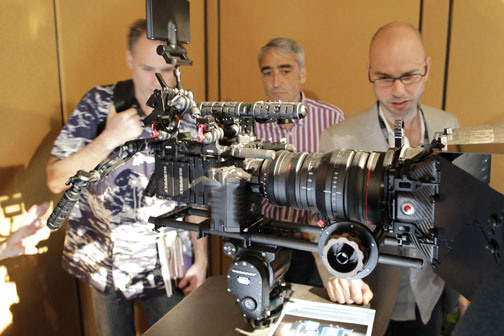







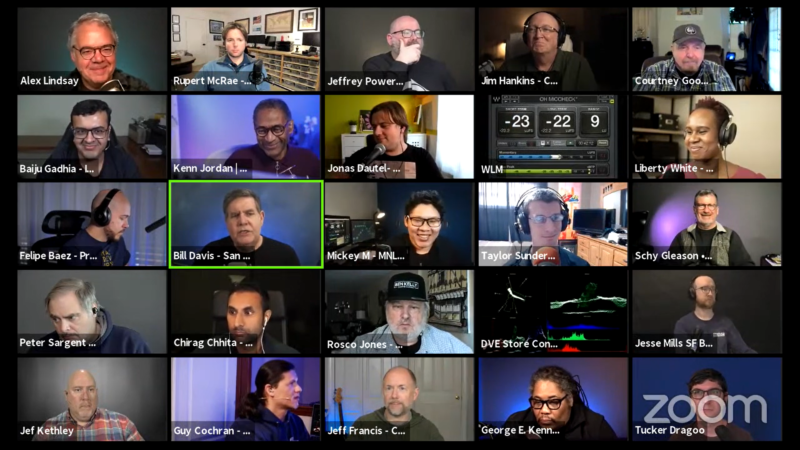
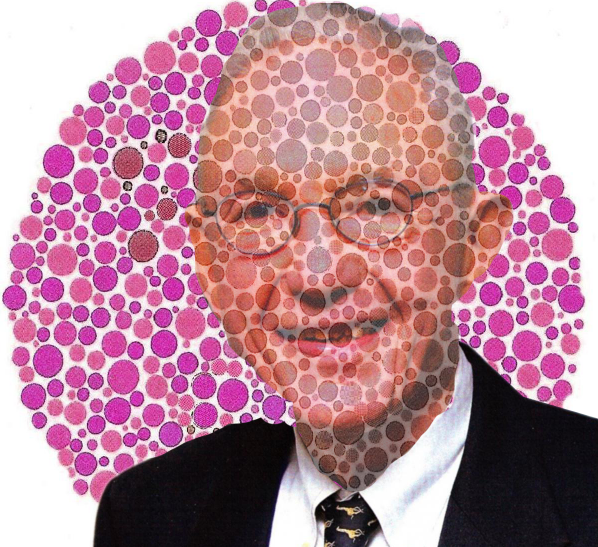
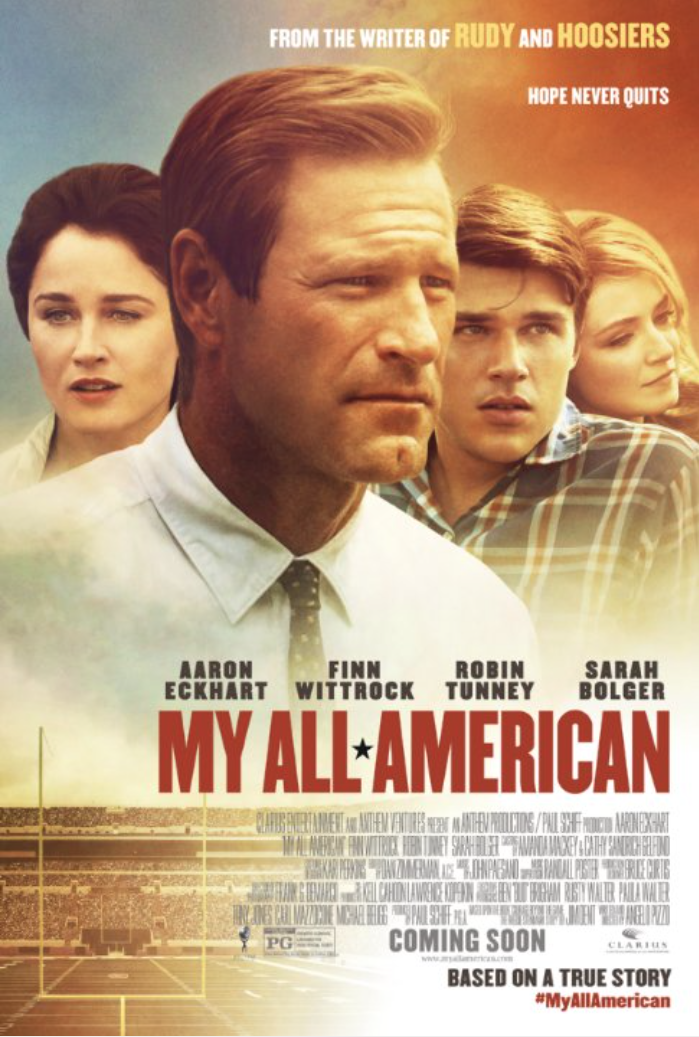
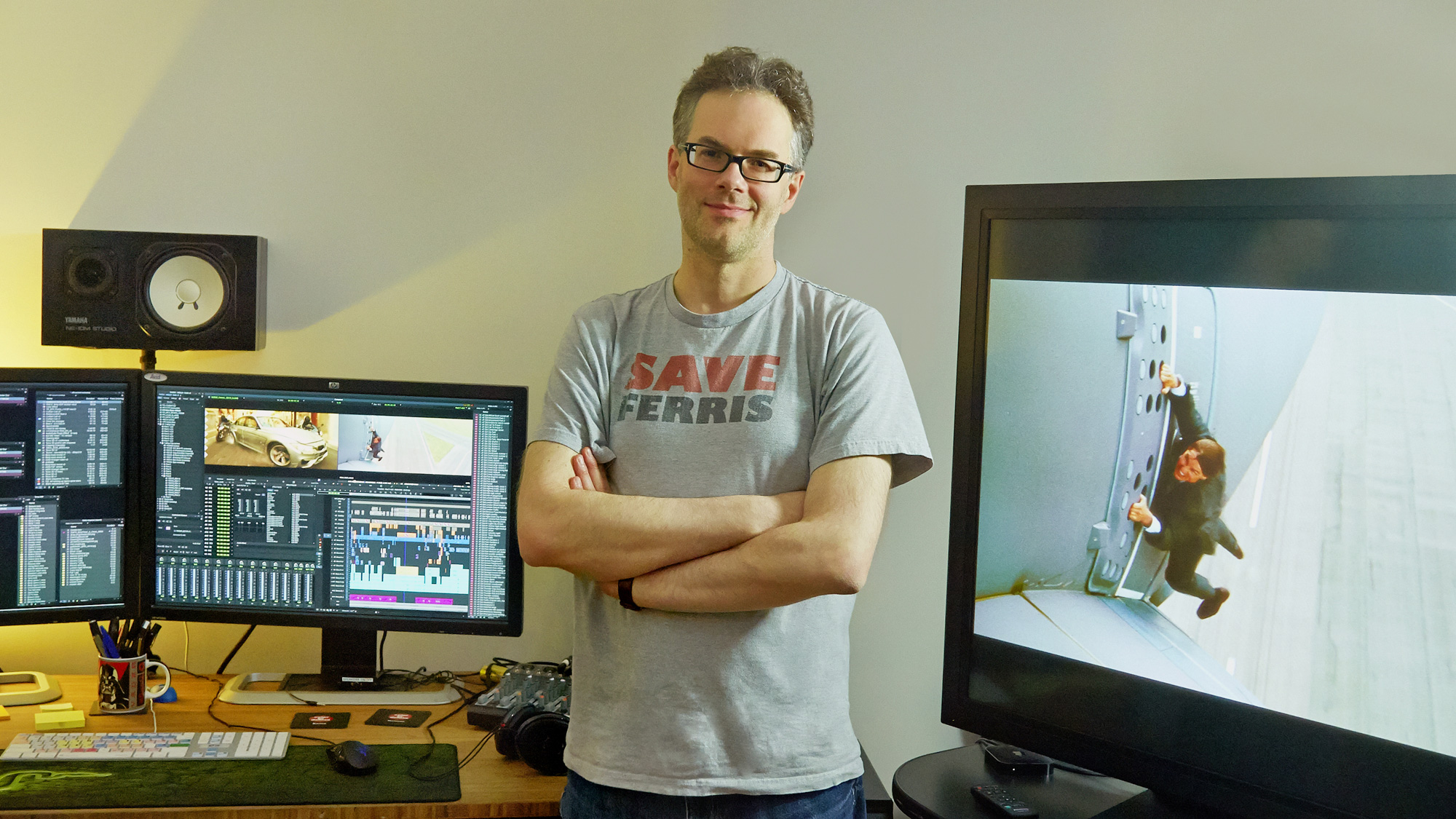
You must be logged in to post a comment.